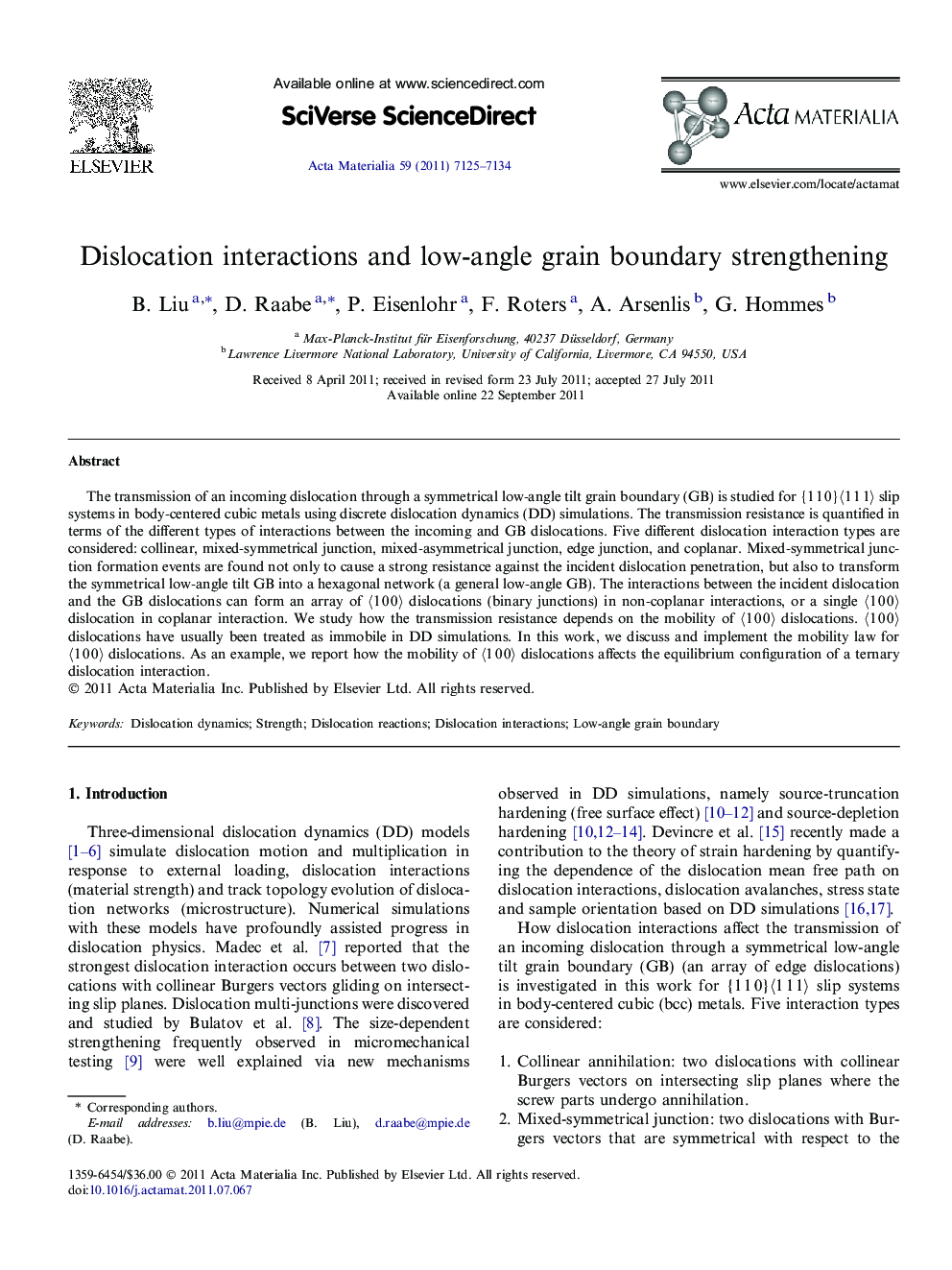| کد مقاله | کد نشریه | سال انتشار | مقاله انگلیسی | نسخه تمام متن |
|---|---|---|---|---|
| 10620408 | 988622 | 2011 | 10 صفحه PDF | دانلود رایگان |
عنوان انگلیسی مقاله ISI
Dislocation interactions and low-angle grain boundary strengthening
دانلود مقاله + سفارش ترجمه
دانلود مقاله ISI انگلیسی
رایگان برای ایرانیان
کلمات کلیدی
موضوعات مرتبط
مهندسی و علوم پایه
مهندسی مواد
سرامیک و کامپوزیت
پیش نمایش صفحه اول مقاله

چکیده انگلیسی
The transmission of an incoming dislocation through a symmetrical low-angle tilt grain boundary (GB) is studied for {1Â 1Â 0}ã1Â 1Â 1ã slip systems in body-centered cubic metals using discrete dislocation dynamics (DD) simulations. The transmission resistance is quantified in terms of the different types of interactions between the incoming and GB dislocations. Five different dislocation interaction types are considered: collinear, mixed-symmetrical junction, mixed-asymmetrical junction, edge junction, and coplanar. Mixed-symmetrical junction formation events are found not only to cause a strong resistance against the incident dislocation penetration, but also to transform the symmetrical low-angle tilt GB into a hexagonal network (a general low-angle GB). The interactions between the incident dislocation and the GB dislocations can form an array of ã1Â 0Â 0ã dislocations (binary junctions) in non-coplanar interactions, or a single ã1Â 0Â 0ã dislocation in coplanar interaction. We study how the transmission resistance depends on the mobility of ã1Â 0Â 0ã dislocations. ã1Â 0Â 0ã dislocations have usually been treated as immobile in DD simulations. In this work, we discuss and implement the mobility law for ã1Â 0Â 0ã dislocations. As an example, we report how the mobility of ã1Â 0Â 0ã dislocations affects the equilibrium configuration of a ternary dislocation interaction.
ناشر
Database: Elsevier - ScienceDirect (ساینس دایرکت)
Journal: Acta Materialia - Volume 59, Issue 19, November 2011, Pages 7125-7134
Journal: Acta Materialia - Volume 59, Issue 19, November 2011, Pages 7125-7134
نویسندگان
B. Liu, D. Raabe, P. Eisenlohr, F. Roters, A. Arsenlis, G. Hommes,